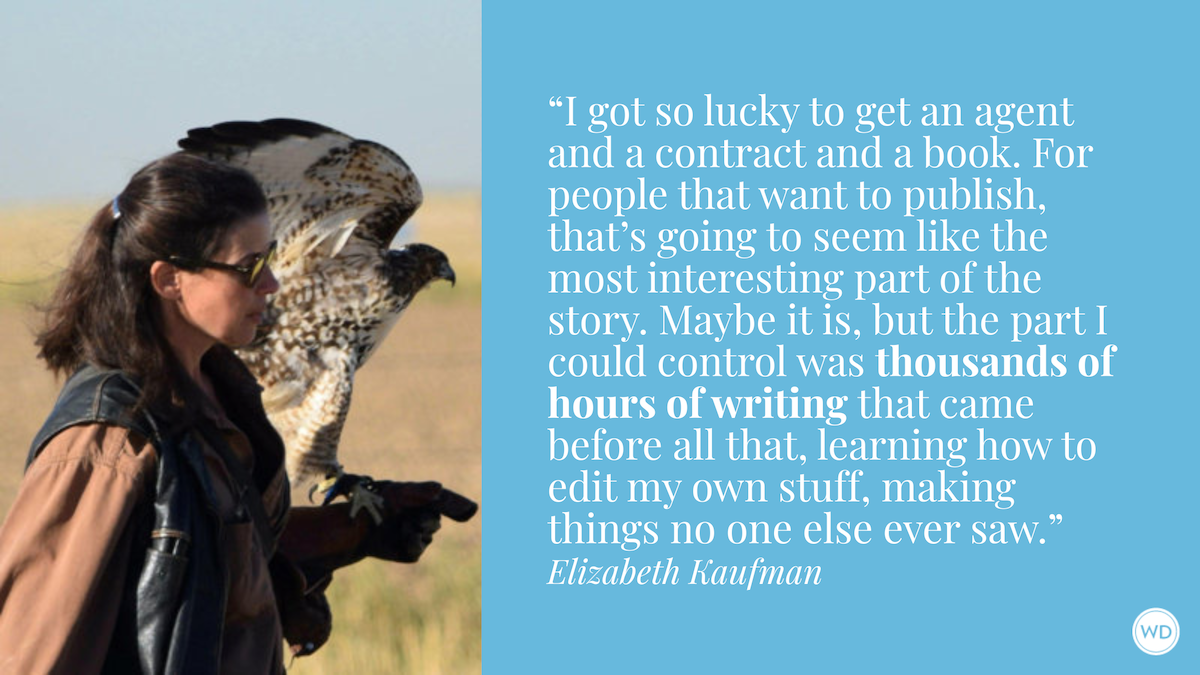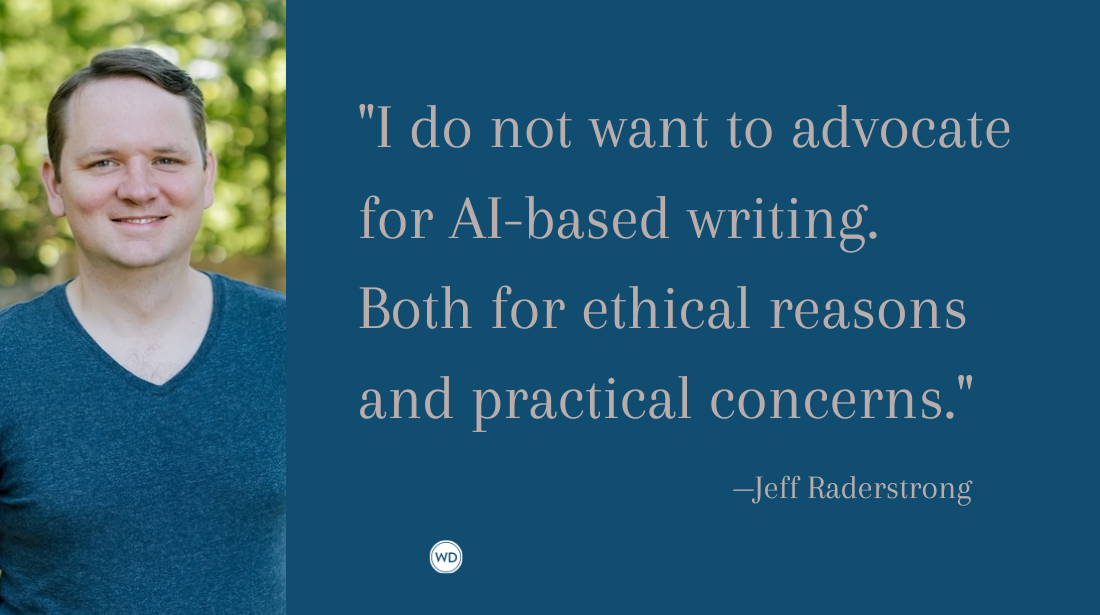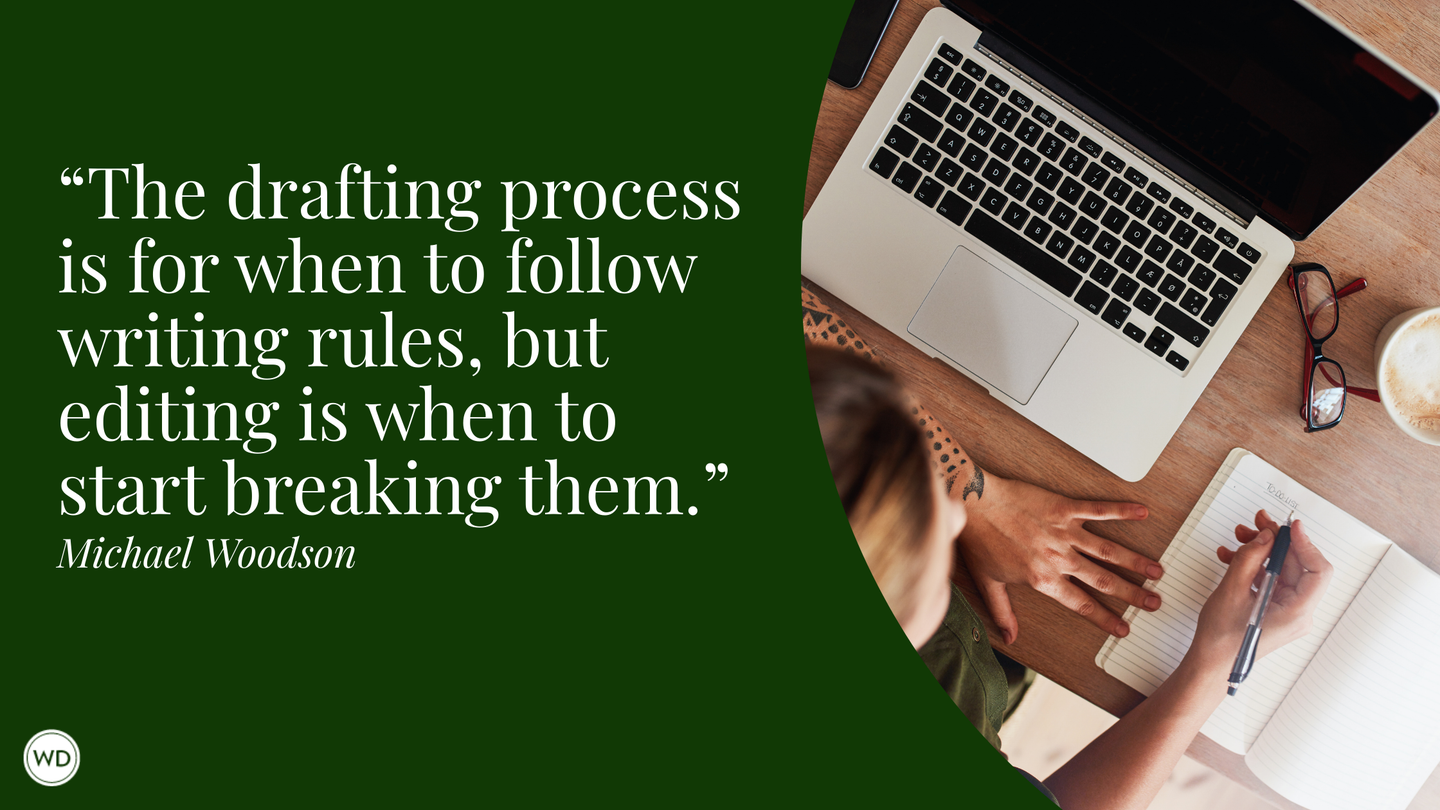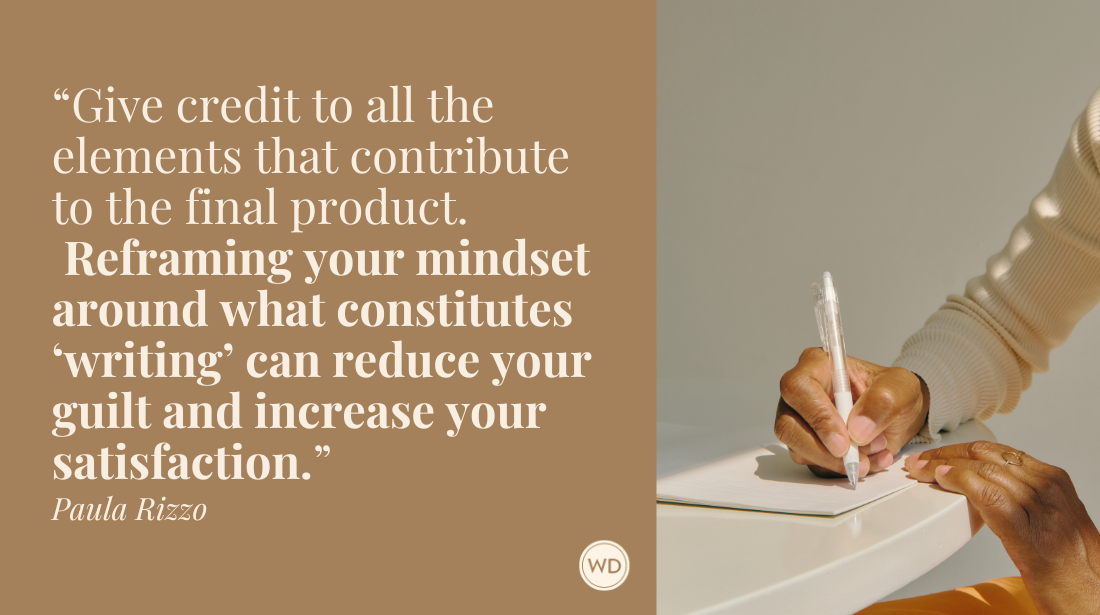How a Month of NaNoWriMo Can Lead to a Lifetime of Better Writing
Executive Director of National Novel Writing Month Grant Faulkner explains how the event changed the way he writes and how it can help teach other authors to create lasting habits and set goals for themselves.
When I first became a writer, I marveled at the magical worlds my favorite authors created—their lyrical prose, their riveting plots, their piercing characterizations. They wrote with such grace, such ease, that it seemed as if they’d been born to it, blessed with a talent and anointed by a higher power. They were masters, and I was a simple novice, a bystander who wanted in but was improperly dressed for the fancy dinner party they attended.
Their prose shimmered like diamonds, but what I didn’t realize was that they hadn’t just plucked those gems from an endless supply and dropped them onto the page. Each precious stone was hard-earned, burnished by the unsexy and often uncelebrated traits of diligence and discipline. When we praise the fine craftsmanship of a novel, we gloss over the toughest but perhaps most important roles in its creation: time management, accountability, work.
Every writer who becomes a master goes through a training ground, whether formal or self-imposed. The boot camp of choice for me—and hundreds of thousands of others like me—is the rollicking, spirited grind of National Novel Writing Month each November. With the heady goal of writing 50,000 words in just 30 days, participants at nanowrimo.org learn valuable approaches to the creative process alongside critical habits to becoming a successful novelist.
Here’s how a month of NaNoWriMo can improve your writing for a lifetime.
The 10,000-Hour Rule
There’s a concept popularized by Malcolm Gladwell’s book Outliers that it takes roughly 10,000 hours of practice to reach mastery, whether in chess, writing or brain surgery. What Gladwell calls “the magic number of greatness” comes from the research of K. Anders Ericsson, who studied the practice time that leads to elite performance and found the average was 10,000 hours (about 90 minutes per day for about 19 years).
Gladwell gives such examples as Ericsson’s study at Berlin’s Academy of Music tracking the practice habits of violinists—the results of which revealed elite performers amassing more than 10,000 hours of playing time—and Bill Gates, who gained access to a high school computer in 1968, before desktops were commonplace, and spent as many hours programming before he became a doyen of computer code.
While your brain doesn’t truly tally your “practice” minutes and magically deem you a master at the 10,000-hour mark, it’s the concept that’s important. Most writers write several hundred thousand throwaway words before they begin to produce their best work. Ray Bradbury wrote 1,000 words a day when he first committed himself to writing: “For 10 years I wrote at least one short story a week, somehow guessing that a day would finally come when I truly got out of the way and let it happen.”
NaNoWriMo encourages a similar process: To write 50,000 words in 30 days, you have to write 1,667 words a day. That means banishing your inner editor and showing up to write on good days and bad days, on hard days at work, on lazy and uninspired days, maybe even on sick days. Your goal beckons you. Your daily word count needles you. In this determined practice, you learn how a novel is built not by the grand gusting winds of inspiration, but by the inglorious increments of constancy.
Participants are cheered along by “pep talks” from bestselling authors sent to their inboxes throughout the month. “It astounds me every time, but the books get done,” Lev Grossman wrote in one such pep talk. “How? It’s not about having some triumphant breakthrough moment. Being a novelist is a matter of keeping at it, day after day, just putting words after other words. It’s a war of inches, where the hardest part is keeping your nerve. The No. 1 reason why people who want to write novels don’t is that they lose their nerve and quit.”
A Wrinkle in Time
The reaction I most often hear from writers who decline to participate in NaNoWriMo is, “Sounds nice, but I don’t have the time.” And really, who does have the time to write 50,000 words in a month?
But great writers have wrangled with time constraints for eons. “Time is short, my strength is limited, the office is a horror, the apartment is noisy, and if a pleasant, straightforward life is not possible then one must try to wriggle through by subtle maneuvers,” Franz Kafka wrote.
There’s an old saying that if you argue for your limitations, you get to keep them. NaNoWriMo is a crash course in time management—an exercise in discovering those “subtle maneuvers” to work around obstacles.
To write 50,000 words in a harried life, you have to closely evaluate how you spend your time. Each October, I go on a “time hunt.” I track how I spend each day, tallying minutes spent on social media, how many TV shows I watch, how long it takes me to shower and make breakfast—everything. It’s always a revelation to see what I fritter away, despite thinking I have no time to spare. Each year I find ways to open up nooks and crannies to hit my daily goals, whether it’s sneaking in five minutes of writing during my son’s soccer game or waking up an hour earlier.
In her book Overwhelmed: Work, Love and Play When No One Has The Time, journalist Brigid Schulte claims that for many working parents, free time comes in bits of “time confetti”—a few minutes here and there. Bradbury wrote Fahrenheit 451 in 30-minute increments using a rented typewriter. Toni Morrison wrote her first novel in the few spare minutes she could scrounge up each day as a working mother. Those small but consistent maneuvers add up.
NaNoWriMo also teaches one of the most under-valued time management skills, one rarely discussed in a writing how-to book: learning to say no.
Saying no takes practice. I start by turning away from my email and social media until I’ve written my daily words. Then I practice saying no to an after-work gathering, a brunch on Sunday, an invitation to watch a basketball game. I don’t want to make life a narrow affair where writing is more important than being with friends and family, but I need to make sure that my creative time isn’t crowded out—and to find the time to write a novel in a month, something has to give.
I still dream of a time when I’ll have vast swaths of space to write, but NaNoWriMo has helped me realize that limitations aren’t all bad. One’s imagination doesn’t necessarily flourish in the luxury of total freedom. One of the many paradoxes of creativity is that it seems to benefit from the pressures and boundaries of our daily lives. A time restriction of writing a novel in 30 days takes away choices that can cause one to dally and maybe not start at all. Constraints also keep perfectionist notions from eating away at you: You dive in and just start writing because you have to.
“The ticking clock is our friend if it gets us moving with urgency and passion,” Twyla Tharp says.
The Heroic Role of Habit
There’s a misguided notion that artists are freewheeling creatures more inclined to follow the fancies of their imaginations than the rigidities of a schedule. Doesn’t routine subvert creativity? Quite the opposite. “Excellence … is not an act but a habit,” Aristotle proclaimed.
Not only does a routine help move your novel forward, but it provides a safe and stable place for your imagination to roam, dance, somersault and leap. But the writing habit isn’t an easy one to form. A habit, after all, is something we do almost without thinking. It’s automatic, like making coffee first thing in the morning.
NaNoWriMo helps you establish such a routine by demonstrating how it can be successfully implemented in such a short span of time. Nearly 90 percent of people fail to keep their New Year’s resolutions, largely because when they lapse, they quit.
One way to hold yourself accountable is to announce your plans. When you tell friends and family about your goals and join the larger NaNoWriMo community in cheering one another online and in person, you’re reinforcing your commitment. When your NaNo buddy or next-door neighbor asks, “What’s your word count?” you won’t want to disappoint her—or yourself. It’s all about “choice architecture”—designing your life and goals around the things you want to achieve, instead of sinking into the powerful claws of more impulsive needs. We tend to be myopic creatures, preferring positive results in the present at the expense of future outcomes. But our “present self” often does a disservice to our “future self,” who will scream back into the dark hallows of the past: “Why didn’t you work on our novel?” NaNoWriMo helps you focus on longer-term goals.
With the first 30 days under your belt, you’ve established the creative momentum to go further. Over time, your discipline will become a habit, a necessity, as instinctual as brewing that coffee upon waking.
It’s Good to Have Goals
If National Novel Writing Month teaches just one thing, it’s the power of setting a goal and having a deadline to keep yourself accountable. The words goal and deadline might not ring with any poetic allure, but in the artistic life these two words should rank right up there with inspiration and imagination.
As Yogi Berra said, “If you don’t know where you are going, you’ll end up someplace else.”
Wharton professor Katherine Milkman and her colleagues found that we’re most likely to set new goals around “temporal landmarks”: a birthday, a holiday, the start of a new semester—or a new month, such as National Novel Writing Month. These milestones create a new “mental accounting period” (past lapses are forgiven, and we have a clean slate ahead of us) and prompt us to turn our gaze toward a better vision of what we want for ourselves and how we can achieve it.
Many accomplished writers apply this NaNoWriMo–style concept to be productive year-round.
“I now treat every novel as if it’s a NaNo novel,” said bestselling novelist Marissa Meyer, who has been participating in NaNoWriMo since 2008. “Of course it’s most fun to be drafting during November, because then you get the rush of being in a community, and of being part of something bigger than just you and your novel, but sometimes the timing with publication and deadlines doesn’t work out. So whenever I am writing that first draft, I aim to have it done in 30 days or less.”
The Joy of Failure
None of that is to say that creativity itself doesn’t play an enormous role in NaNoWriMo, which in fact teaches many lessons about the creative process. One of the most important is that novels are essentially constructed through a series of experiments, many of which fail. You’re dropped into a dark forest, and have to walk down paths that might not lead anywhere. You’re a tracker, following the scents of your story. You have to trust your instincts, read the signs in the sky, and try things … because something has to happen next. Standing still is not an option.
“Piecing a novel together over a year or more, one paragraph at a time, with days and weeks off in between, does not produce the same quality for me as writing full-bore,” bestselling author Hugh Howey says, who has participated in NaNoWriMo since 2009. “I want to write as breathlessly as readers consume the work. I want to live in my book and not leave until it’s done. [That’s] the essence of NaNoWriMo.”
NaNoWriMo invites you to generate many new ideas—to rip through failures, learn from them and build on them. “The real measure of success,” Thomas Edison said, “is the number of experiments that can be crowded into 24 hours.” In the case of NaNoWriMo, it’s how many experiments can be crowded into 30 days.
“I like to think of NaNo-ing as excavating. You uncover different things at the 30,000-word mark than you do at 10,000,” says Erin Morgenstern, who wrote the rough draft of her acclaimed novel The Night Circus during NaNoWriMo. “Things that felt like desperate, random nonsense on Page 72 (the abandoned broken pocket watch, a partially obscured tattoo, that taxidermied marmot on the mantelpiece) are suddenly important and meaningful on Page 187. Everything could hinge on the fate of that marmot. Or the marmot may be a red herring. Or perhaps the marmot is just a marmot. You have to keep writing to find out.”
That sense of playful wonder is important for writing mastery, and NaNoWriMo teaches you to trust the gambols of your imagination, to test your ideas on the page. When you stop demanding perfection of yourself, the blank page becomes a spacious place, a playground. So what if the plot has gotten away from you? So what if your novel feels a bit sloppy? It’s just a first draft. Masters learn to be patient with their uncertainty, to tolerate moments of doubt and let their stories develop embryonically.
NaNoWriMo gives you the opportunity to reflect on your writing, to understand what creative approaches work for you, and to develop the grit, resilience and can-do gusto of a true master. NaNoWriMo is an occasion to fill your writer toolbox with as many tools as you can. You can prepare by outlining or filling out a character questionnaire—or you can just jump in. You can write alone—or attend write-ins with others. You can try a little from Column A and a little from Column B. The main thing, though, is that you write. Make it a part of your day, your life, and every day you write will be one day closer to mastery.
Also, order the guide written by NaNoWriMo founder Cris Baty, No Plot? No Problem!: A Low-Stress, High-Velocity Guide to Writing a Novel in 30 Days.
Grant Faulkner is the Executive Director of National Novel Writing Month (NaNoWriMo) and the co-founder of 100 Word Story. He's published Pep Talks for Writers: 52 Insights and Actions to Boost Your Creative Mojo; Fissures, a collection of 100-word stories; and Nothing Short of 100: Selected Tales from 100 Word Story. His stories have appeared in dozens of literary magazines, including Tin House, The Southwest Review, and The Gettysburg Review, as wellas in anthologies such as Best Small Fictions and Norton's New Micro: Exceptionally Short Fiction. His essays on creativity have been published in The New York Times, Poets & Writers, Writer’s Digest, and The Writer. He also hosts Write-minded, a weekly podcast on writing and publishing. Follow on Twitter @grantfaulkner.








